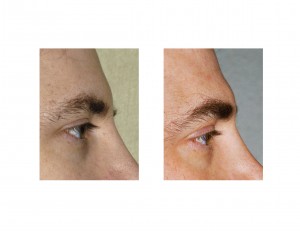One of the reasons that fat grafting has become so popular in plastic surgery is its versatility. Because of small cannula delivery techniques, fat grafts can literally be placed just about anywhere in any amounts. This has led to fat grafting becoming a near universal method for soft tissue augmentation and, more selectively, bony augmentation. While there are issues with how well fat grafting works (how much fat survives), its ease and precision of placement makes it appealling nonetheless.
The role of aesthetic facial fat grafting is to add volume providing a rejuvenation effect. This can be done in all regions of the face, although it is more commonly done in the midfacial and perioral regions The upper face, consisting of the forehead and brow, is well known to be treated with it mostly being done for temporal hollowing in the lateral forehead. The flatter surfaces of the forehead are a far different challenge as providing a significant augmentative effect that is smooth is virtually impossible with injection fat grafting. Brow augmentation, however, is a much smaller area and creating an enhanced ridge is am easier shape to achieve and maintain.
Isolated brow augmentation is done for different reasons that a total forehead augmentation. It is almost exclusively done in men who want a stronger and more masculine appearance through the creation of a more prominent brow ridge and visible brow break into the forehead. It may also be attempted because of the desire to have a bit of a browlift or to camouflage skeletonization of the orbital rims. To determine if fat grafting is a good option, one should first have a trial of an inexpensive injectable filler to ensure that any injection approach can create the desired brow look.

While there are more precise and completely predictable methods of brow augmentation using bone cements, these require an open scalp approach and a resultant scar. This hardly seems justified when the amount of brow augmentation needed is relatively minor or isolated just to the brow ridge. Despite the unpredictability of fat injection survival, its simplicity makes it an appealing option for brow enhancement.
Dr. Barry Eppley
Indianapolis, Indiana


